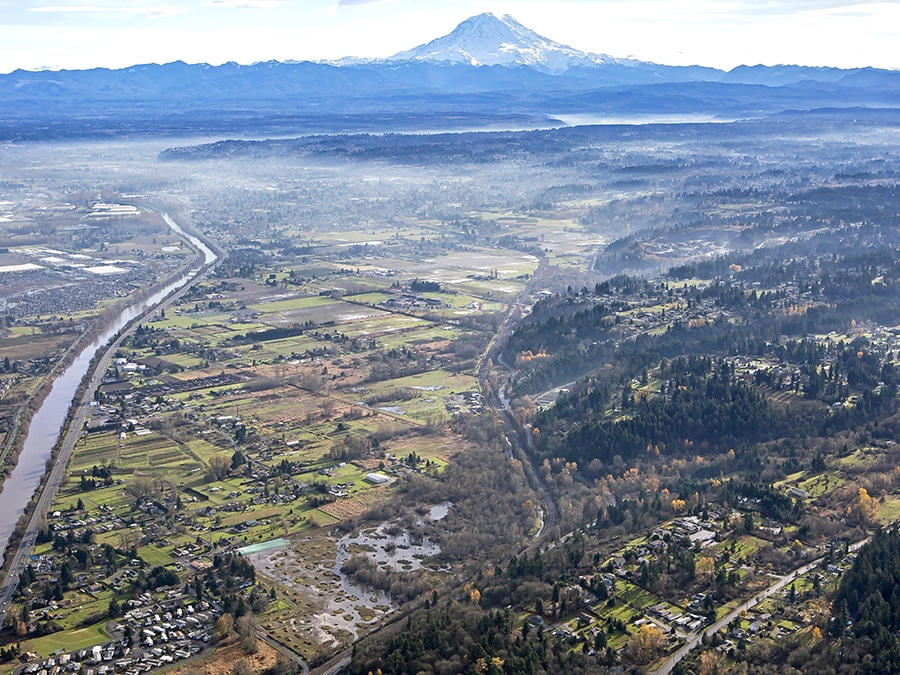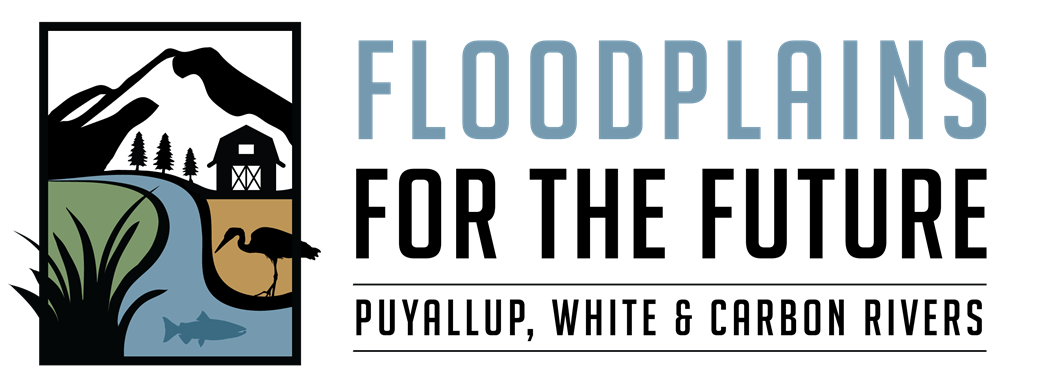Resources for Partners

Floodplains for the Future Resources
This page documents various resources related to flood risk, agriculture, and salmon habitat. This information will be updated from time-to-time as new data and reports become available.
Results Summit
FFTF partners regularly review and discuss monitoring results, with our “Results Summit” meetings providing an opportunity for all partners to thoroughly review our progress as documented by our shared metrics and data, and to adaptively manage our monitoring program. The Results Summit was held annually till 2021, and has now shifted to a biennial schedule (i.e., the next summit will be May 2023).
Annual Reports
Each year, FFTF partners produce an Annual Report that summarizes their efforts and results from the prior year.
Outside Websites
Farming in the Floodplain Project
The Farming in the Floodplain Project was an element of the Floodplains for the Future (FFTF) Initiative in the Puyallup River Watershed. The purpose of the FFP was to improve the understanding of agricultural needs in order to support the long-term agricultural viability of the Puyallup watershed and the Clear Creek area. Throughout the duration of the Farming in the Floodplain Project, numerous memos and documents were produced detailing technical information about agriculture and related elements throughout the watershed. These documents can be accessed below:
Farmland Pressure Mapping
To better understand the challenges facing farmland in the Puyallup River watershed, FFTF led a mapping project to identify current and future pressures facing agricultural lands. This effort examined the loss of farmland, the relationship between farmland and habitat and infrastructure projects, conserved farmland, cities and Urban Growth Areas (UGAs), and zoning. The document linked below provides a summary of the results and key points generated through the effort.
Connected/Natural Floodplain
One metric in the FFTF Index of Floodplain Health tracks the amount of connected natural floodplain in the watershed. At the May 2021 Results Summit, the Monitoring and Adaptive Management Team presented results for the metric for 2013, 2015, and 2017. The results showed that, due to the completion of floodplain reconnection projects, the acreage of Connected/Natural Floodplain is increasing. At the Results Summit, FFTF partners asked for additional analysis and breakdown of the metric results to help increase the understanding of what the results mean, particularly at the reach scale. The memorandum linked below provides those additional analyses and findings on the metric.
